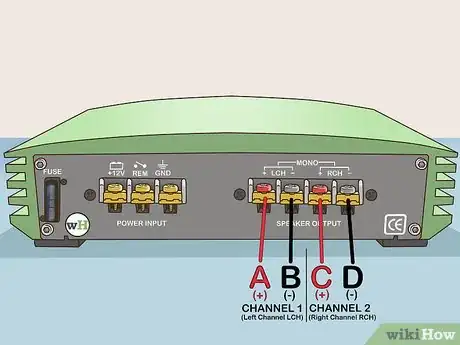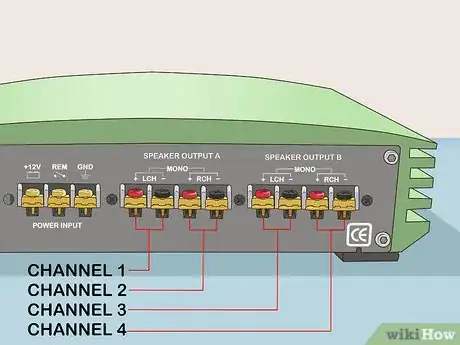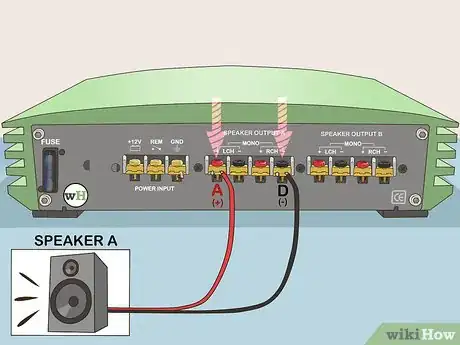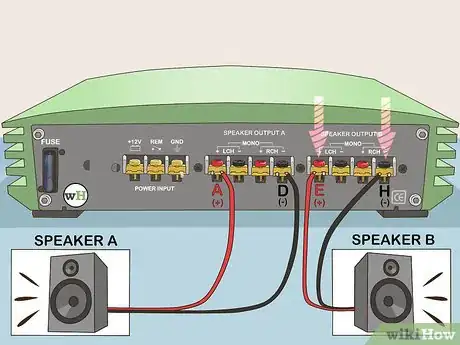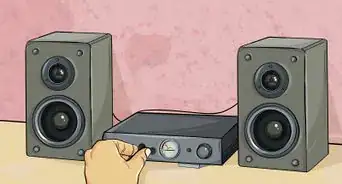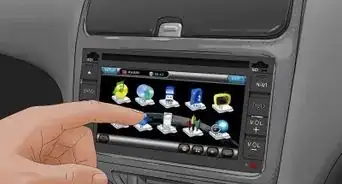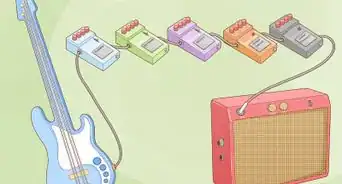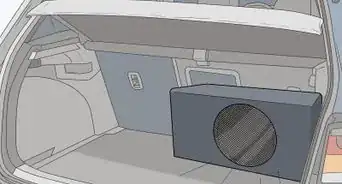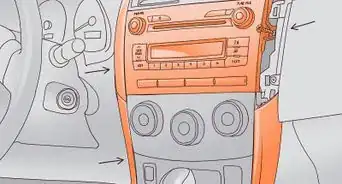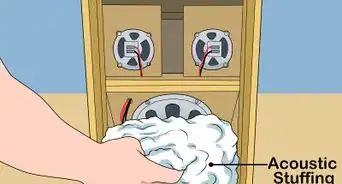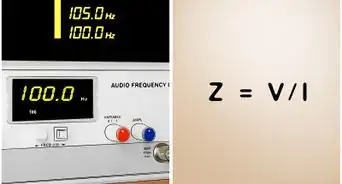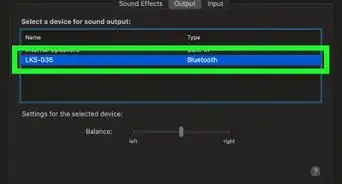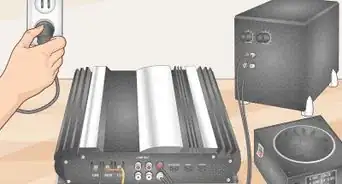X
wikiHow is a “wiki,” similar to Wikipedia, which means that many of our articles are co-written by multiple authors. To create this article, 37 people, some anonymous, worked to edit and improve it over time.
This article has been viewed 1,039,623 times.
Learn more...
Bridging an amplifier combines the available channels into one channel with half the ohm (Ω). It is commonly used in car stereo systems, allowing a powerful mono signal to be sent to a subwoofer.
Steps
Method 1
Method 1 of 2:
Two-Channel Amps
-
1Make sure your amplifier can be bridged. This should be indicated on the documentation pamphlets that came with the amplifier, or the amplifier itself. If the amplifier is used, or lacks documentation, go online and check for the specifications on the manufacturer's website.
- Bridging an amplifier cuts the resistance load (measured in ohms) in half, which can cause it to overheat. Be sure to check your manual (or the manufacturer’s website) to see if once connected to a speaker, whether or not your amplifier can function at half the ohms it currently uses.
- Most amplifiers have a small diagram near the channels indicating the terminals you would use to bridge it. If your amplifier does not claim to be able to bridge, don't try to bridge it. It may already be bridged internally, and you could cause damage to your amplifier.
- Be aware of the fact that if your amplifier is a stereo amplifier (amplifying both left and right), bridging it would cause it to become a mono amplifier (amplifying from one; either the left or right).
-
2Know the layout of your equipment. On your two-channel amp, you should see 4 terminals: a positive (+) and a negative (-) for channel 1, and a positive (+) and a negative (-) for channel 2. Each terminal will be labeled as follows:
- Channel 1
- "A" (positive)
- "B" (negative)
- Channel 2
- "C" (positive)
- "D" (negative)
Advertisement - Channel 1
-
3Connect the amplifier to one speaker. From the wires coming out of the speaker, connect the positive speaker lead to terminal A (the positive for channel 1) and connect the negative speaker lead to terminal D (the negative for channel 2). Connect these wires by unscrewing the screw in that terminal, placing the wire in between the top and bottom portions of the terminal, and then screw the screw down tightly to secure the wire.
- The wires coming from the speaker are going to be insulated with a plastic coating. You will need to strip off a small portion of the wire insulation (less than 1 inch) using a pair of wire strippers in order to secure it to the terminals.[1]
- What this connection does is it combines the power from the two separate channels, doubling your power output.[2]
Advertisement
Method 2
Method 2 of 2:
Four-Channel Amps
-
1Know your amplifier. Just like method 1, you must figure out if your four-channel amplifier can be bridged. Taking all the same precautions, be sure to consult the amplifier manual or research your amp model online to be sure it can be bridged.
-
2Know the layout of your equipment. On your four-channel amp, you should see 8 terminals: channels 1 through 4 each have a positive (+) and negative (-) terminal. Each terminal will be labeled as follows:
- Channel 1
- "A" (positive)
- "B" (negative)
- Channel 2
- "C" (positive)
- "D" (negative)
- Channel 3
- "E" (positive)
- "F" (negative)
- Channel 4
- "G" (positive)
- "H" (negative)
- Channel 1
-
3Connect the amp to the first speaker. From the wires coming out of the speaker, connect the positive speaker lead to terminal A (the positive for channel 1) and connect the negative speaker lead to terminal D (the negative for channel 2). Again, just like bridging a two-channel amplifier, connect these speaker wires to the amplifier by unscrewing the screw in that whichever terminal you are connecting the wire to, place the wire in between the top and bottom portions of the terminal, and then screw the screw down tightly to secure the wire.
- Once the wires are secured, the first speaker is connected to the amplifier.
-
4Connect the amp to the second speaker. Following the previous method, again take the wires coming from the second speaker, but this time, connect the positive speaker lead to terminal E (the positive for channel 3) and connect the negative speaker lead to terminal H (the negative for channel 4).
Advertisement
Community Q&A
-
QuestionHow can I play two speakers on one amp using bridged mode?
 Community AnswerYou will need a 4 channel amp to run 2 speakers in bridged mode. Typically the speakers will be hooked to the positive side of one channel and the negative side of another thus bridging the channels, but this is not always the case. Look for the diagram near the speaker connects to see how yours is bridged. Once the speakers are hooked up, there will be a switch marked Stereo, Mono, or Bridged. Set this to Bridged.
Community AnswerYou will need a 4 channel amp to run 2 speakers in bridged mode. Typically the speakers will be hooked to the positive side of one channel and the negative side of another thus bridging the channels, but this is not always the case. Look for the diagram near the speaker connects to see how yours is bridged. Once the speakers are hooked up, there will be a switch marked Stereo, Mono, or Bridged. Set this to Bridged. -
QuestionCan I connect one dual-coil speaker to a four-channel amplifier?
 Community AnswerSurely - this is possible. Simply handle the two voice coils like they were from two separate speakers. (And like the description of "Method 2".) Don`t interchange their connections (+ of one vc to - of another). But beware: you'd better feed the four channels with the same signal (which means: all inputs fed from the same source,mono, not stereo), and surely not 4 different signals ("quadrophonic"), to get best results. Treat the voice coil's terminals as they're marked, + as +, - as -.
Community AnswerSurely - this is possible. Simply handle the two voice coils like they were from two separate speakers. (And like the description of "Method 2".) Don`t interchange their connections (+ of one vc to - of another). But beware: you'd better feed the four channels with the same signal (which means: all inputs fed from the same source,mono, not stereo), and surely not 4 different signals ("quadrophonic"), to get best results. Treat the voice coil's terminals as they're marked, + as +, - as -. -
QuestionHow do I bridge my CD player to 2 separate stereo receivers?
 Community AnswerIf your CD player has a line output, you are not going to be able to bridge it. Only amplifiers can be bridged. You are only spltting the audio signal into your receivers and you will need a splitter for that.
Community AnswerIf your CD player has a line output, you are not going to be able to bridge it. Only amplifiers can be bridged. You are only spltting the audio signal into your receivers and you will need a splitter for that.
Advertisement
Warnings
- Be extra careful when bridging a four-channel amp! This can put too much strain on your alternator or speaker.⧼thumbs_response⧽
Advertisement
References
About This Article
Advertisement

